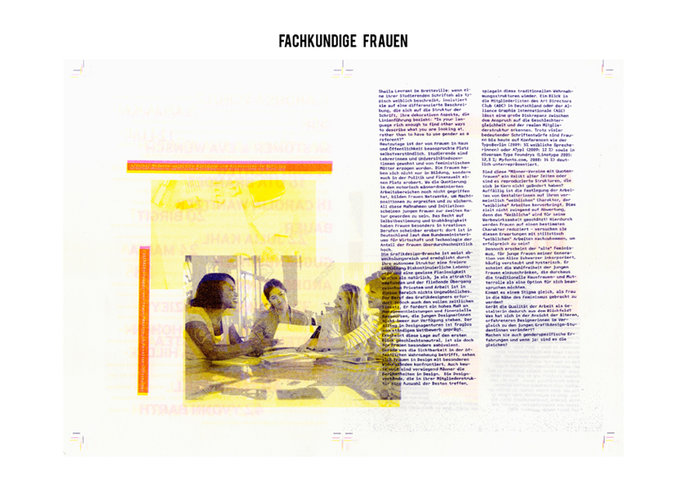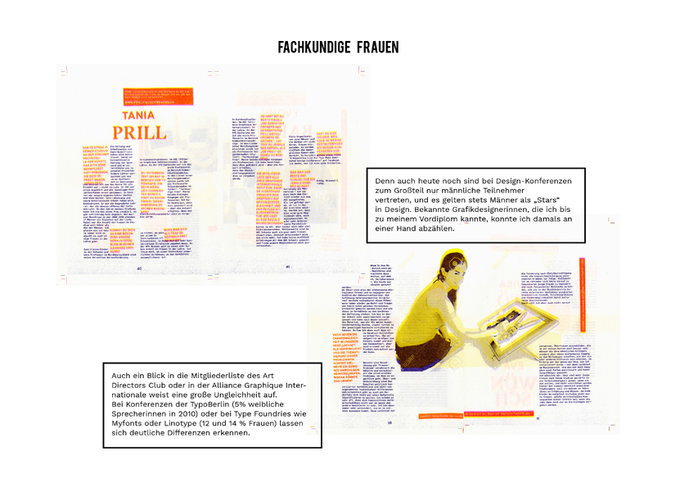

© Emma-Lilo Keller


© Emma-Lilo Keller


© Emma-Lilo Keller


© Emma-Lilo Keller
For her intermediate diploma, Emma-Lilo Keller interviewed female graphic designers including Tania Prill and Anja Kaiser (lecturers at HfG Karlsruhe), Yvonn Barth, aswell as the female students of graphic design. The questions were about the visibility of women in the field: Is the graphic design branch really more free of prejudices thannon-creative branches? Where do many of these students “disappear” to? Are female-only networks helpful or rather unproductive?
“In the lists, I was titled as professor as follows: “Competent Woman” Both my (male) colleagues, on the other hand,as professors.” (Tania Prill) “Ithas always been important for meto show integrity, andnotto bend my will inorder to come across as more dominant or“manly”.” (Andrea Tinnes) “Women are associated more with cute illustrations from fairytales.” (Luisa Stömer/Eva Wünsch)
The prejudice that women are less confident at negotiating dueto their harmonious nature still stands today. If this were true, one could conclude that women only have themselves to blame for their low visibility. Then comes the question: Isit even legitimate, to ascribe such essential differences based on sex?
Even today design conferences are mostly represented by male participants. Asexamples, only 5%of the speakers in the conferences at TypoBerlin 2010 were women, at Type Foundries such as Myfonts or Linotype, 12-14%. There are only a few known female graphic designers – the “stars” are usually male. A glance at the members list of the Art Directors Club or the Alliance Graphique Internationale shows a stark inequality between the sexes.
The results of the interviews and research was gathered in a book, representing the views of the female graphic designers on their careers, areas of work as well as the prevailing prejudices within them. Risography was used for the printing process - a special printing system that only allows a single color for each batch. The book was produced in three colors: pink, purple and yellow.
Tutors:
Rebecca Stephany, Sereina Rothenberger